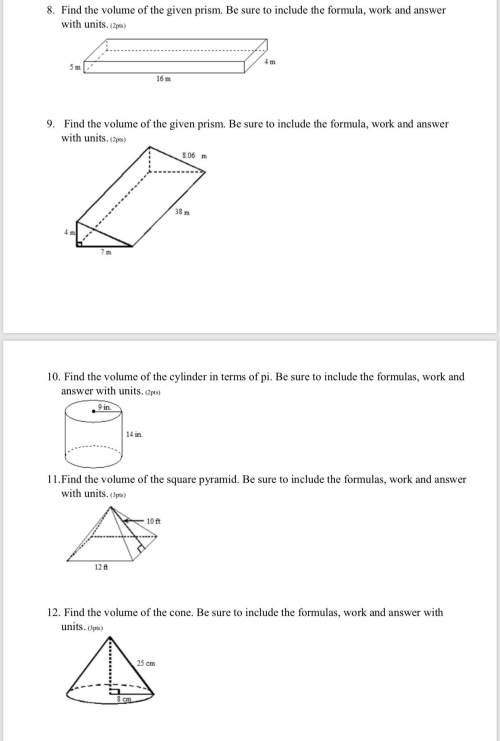
Mathematics, 11.02.2020 03:19 sriggins1375
Let A = {x1, x2, . . . , x12} be a set of 12 positive integers, not necessarily distinct, such that xi ≤ 150, 1 ≤ i ≤ 12. Prove that there are at least two different 6-element subsets S1 and S2 of A such that the sum of the elements in S1 is equal to the sum of the elements in S2. Use Pigeonhole principal.

Answers: 2


Other questions on the subject: Mathematics

Mathematics, 21.06.2019 17:30, laurielaparr2930
X-intercept=-5 y-intercept=2 the equation of the line is
Answers: 2

Mathematics, 21.06.2019 19:30, autumnplunkett09
Runner ran 1 4/5 miles on monday and 6 3/10 on tuesday. how many times her monday’s distance was her tuesdays distance
Answers: 1

Mathematics, 21.06.2019 20:20, SESDMANS9698
Select the correct answer from each drop-down menu. the length of a rectangle is 5 inches more than its width. the area of the rectangle is 50 square inches. the quadratic equation that represents this situation is the length of the rectangle is inches.
Answers: 1
You know the right answer?
Let A = {x1, x2, . . . , x12} be a set of 12 positive integers, not necessarily distinct, such that...
Questions in other subjects:

Mathematics, 30.11.2021 21:00






Mathematics, 30.11.2021 21:00

English, 30.11.2021 21:00

Mathematics, 30.11.2021 21:00




